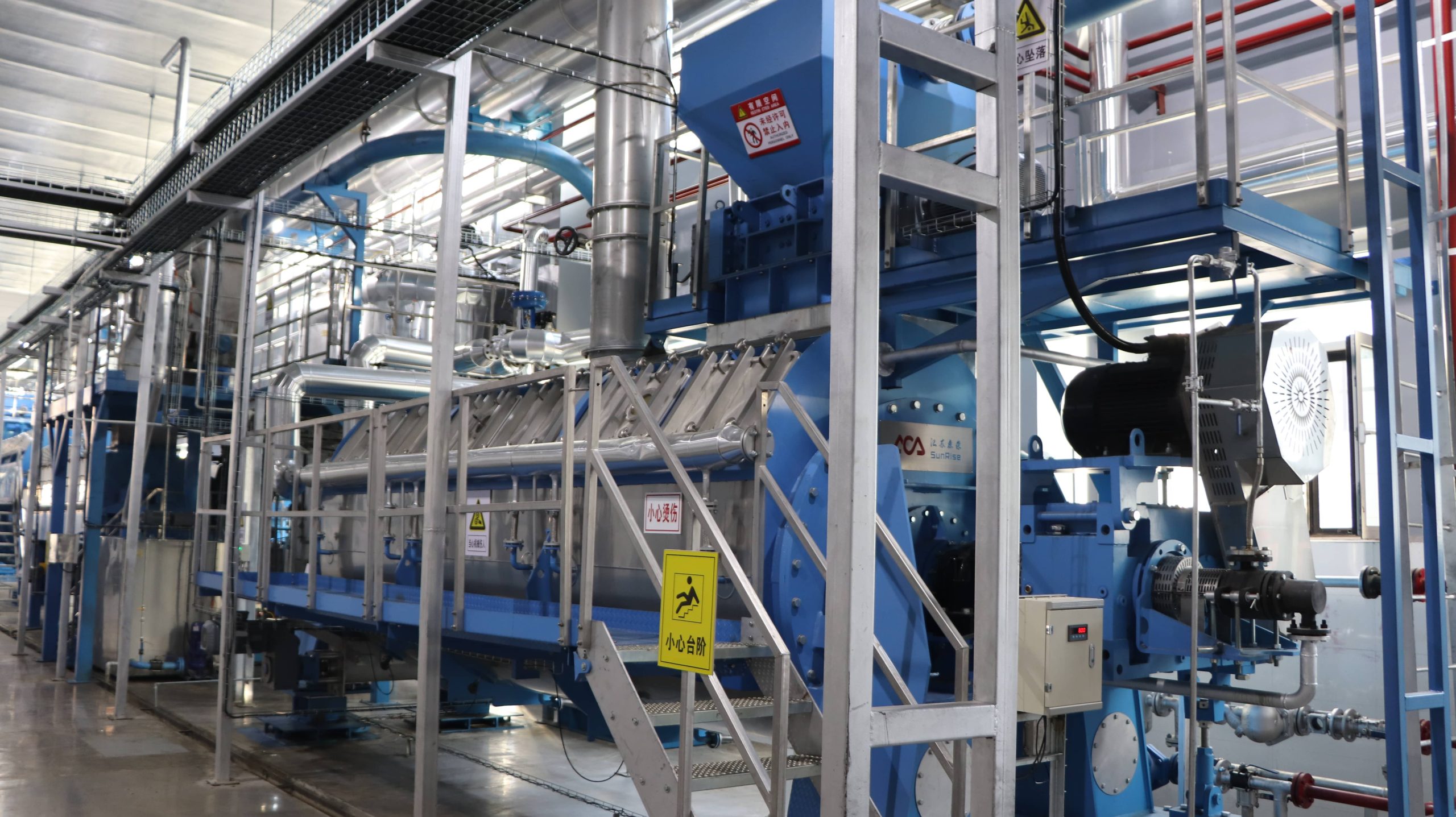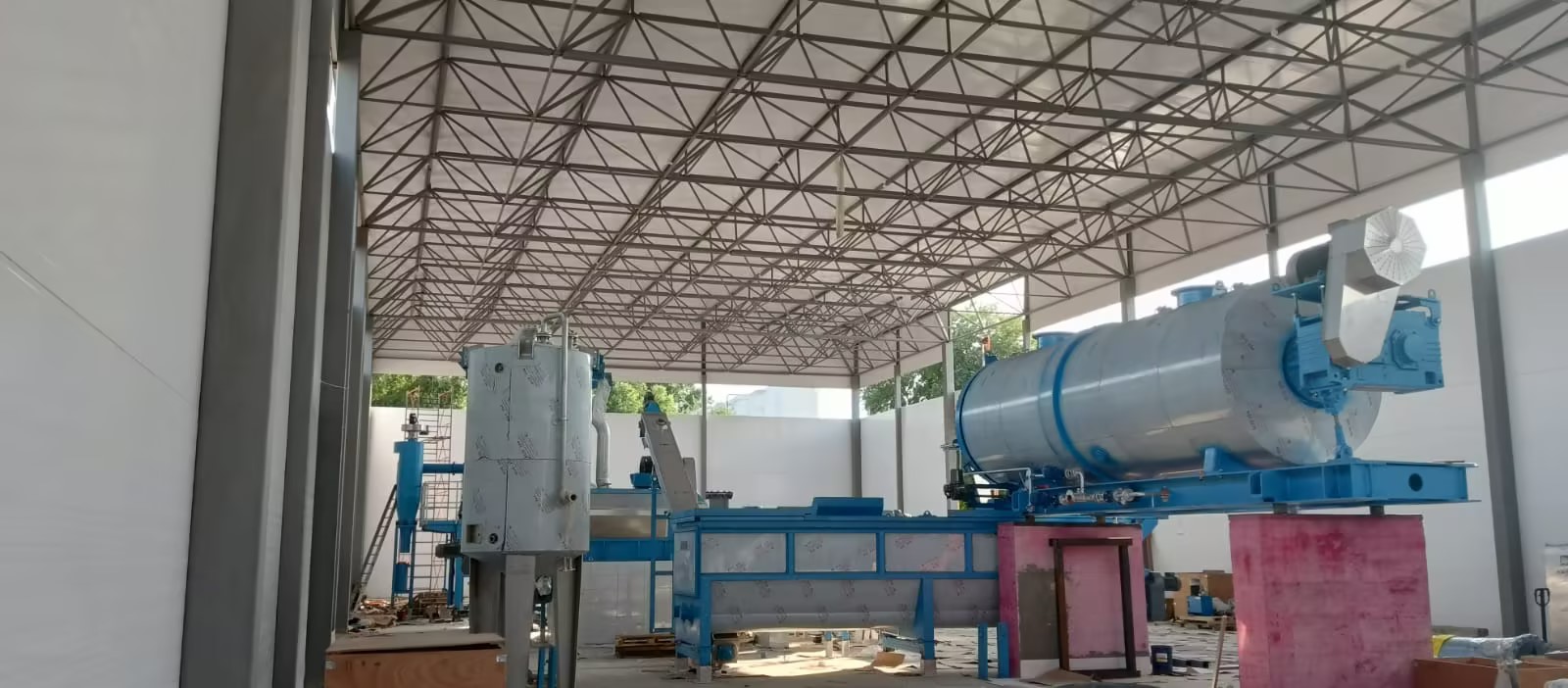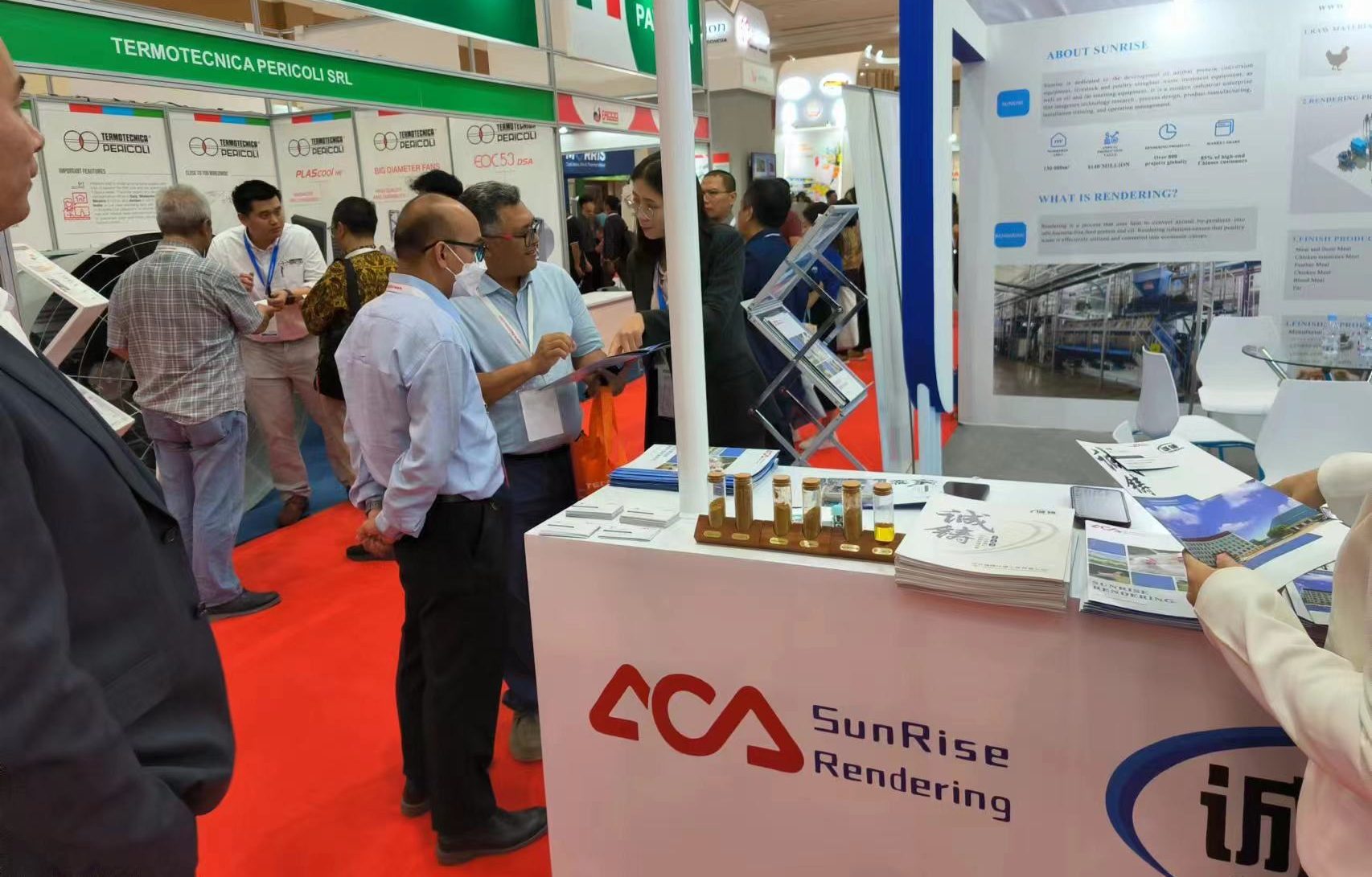
Chilling and Freezing Birds
Chilling and Freezing Birds
Chilling and freezing birds is a practice commonly used in the food industry to preserve their freshness and extend their shelf life. By subjecting birds to low temperatures, the growth of bacteria and other microorganisms is slowed down, reducing the risk of spoilage.
Recently, the demand for poultry meat has increased. There is a reconstruction of existing poultry farms, construction of new ones. The highest requirements are placed on product quality, and high product quality is achievable only with full observance of the technological process and the use of modern processing equipment. Much attention is also paid to refrigeration equipment, which is indispensable for poultry processing.
Currently, there are several ways to cool carcasses after slaughter and heat treatment. The most common cooling method is immersion in cold water, air cooling, air-drop cooling.
Each of these methods has its own advantages and disadvantages. Cooling of poultry with air takes place in the cooling chamber, where, using standard refrigeration equipment, the air temperature is maintained at about 0 ° C, the movement speed is about 4-5 m / s. The cooling time of poultry from +40 °С to +4…+6 °С is about 2 hours. The main advantages of air cooling are the low cost of equipment, the absence of the risk of cross-insemination of birds. However, there are a number of significant drawbacks that do not allow achieving high product quality in the case of air cooling: loss of presentation and weathering, significant shrinkage and weight loss of the product. In addition, there are a number of difficulties due to the long duration of cooling and a significant increase in the length of the conveyor.
The most common method is the method of immersing carcasses in a chilled water bath. After slaughter and heat treatment, poultry with a temperature of +40…+42 °C is fed into the pre-cooling bath. Here, the temperature drops by several degrees and the birds are pre-washed. The movement of bird carcasses in the bath is carried out using an auger. Water from the pre-cooling bath is usually drained to the sewer. In the next bath, cooling down to +8 °C takes place. The residence time of carcasses in the second bath is the longest. Water from the second bath is usually returned to the water cooling system for cooling. After the main cooling bath, there may be several options. The first option is that the bird can be processed. However, this does not meet the requirements: the temperature of the carcass before packaging should not exceed +4 °C. The second method is to cool the bird in a bath of ice water. The third method is air cooling of the bird. Chilling and Freezing Birds
In the case of cooling poultry by immersing carcasses in a bath of chilled water, the cooling time is no more than an hour with the correct organization of water supply and costs. The main disadvantage of this method is the need for disinfection in order to avoid cross-insemination of birds with microflora.
Air-drop cooling combines the above two methods. Poultry carcasses suspended on a conveyor are fed into the chamber, where they are irrigated with water from nozzles and blown with cooled air. A variant with periodic water supply and a change in the air temperature in the chamber during the cooling process is possible. The air-drop cooling method combines the advantages of the two methods listed above: a high rate of carcass cooling, no weight loss due to shrinkage, and no airing. A significant advantage in using the proposed cooling method is the impossibility of inseminating the bird. The main disadvantages of the air-drop cooling method include the high cost of equipment and high operating costs.
Freezing a bird: Chilling and Freezing Birds
Freezing of poultry or semi-finished products in stationary long-term freezing chambers is applicable for products with significant overall dimensions, the freezing process of which, regardless of the temperature in the chamber, takes a long time. This is usually the freezing of whole bird carcasses; produced in packaging – cellophane film. Carcasses are placed in boxes of 12 kg, after which they are brought into the freezing chamber. The freezing time is from 12 to 24 hours depending on the productivity of the enterprise. Freezing a carcass packed in this way in less than 12 hours is difficult even with a decrease in the air temperature in the chamber. The air temperature in the long-term freezing chambers is -18 … -25 ° С, the air speed is 2-5 m / s. It is recommended to use air coolers with a fin spacing of at least 7 mm. Refrigeration system – standard in accordance with the catalog. A mandatory option in this case is a liquid separator, which serves to prevent liquid refrigerant from entering the compressor suction line due to uneven heat load.
Freezing on trolleys in shock freezing chambers is recommended for products that require quick freezing to reduce shrinkage, preserve the presentation, product properties. maintain taste. Freezing using racks and trolleys is applicable for a capacity of 150, maximum 300 kg/h of products. As already mentioned, the main factor in shock freezing is the speed of freezing. Some features of the choice and calculation of refrigeration equipment are associated with this. The temperature in the chamber is taken from -25 °C to -35 °C, depending on the size of the frozen products. It should be borne in mind that, having relatively large overall dimensions, the product can freeze to the center in no less than a certain time, regardless of the temperature and air velocity in the chamber. Therefore, an excessive decrease in temperature will not lead to a significant reduction in freezing time, and the refrigeration capacity and equipment cost will increase significantly.
The second feature is related to the distribution of air flow in the chamber. Air movement should be carried out with the same high intensity (3-6 m/s) at any point of the trolley or rack. It is not possible to provide such an air flow distribution with a conventional cubic evaporator. In this regard, it is recommended to install air coolers of floor or pedestal type. The cooled air in this case will move evenly, flowing around all layers of the frozen products, as shown in the figure.
If it is necessary to achieve the maximum amount of frozen products in shock freezing chambers, the problem of ice growth on the fins of the evaporative battery arises. It is unacceptable to defrost during operation during the shift, since it will take at least 40 minutes in time, and the chamber will not be used during this time. The most suitable method for solving this issue is to install a battery with a fin spacing of at least 9 mm, and preferably 12 mm. With this step of the fins, the battery will be able to work for at least 8 hours without defrost, and in some cases, the continuous operation time reaches 48 hours. Of course, increasing the intercostal distance will increase the cost of the equipment. However, the increase in the amount of frozen products pays for the increase in the cost of the refrigeration system in no more than 2 months.
The main advantage of freezing products on trolleys is the low cost of refrigeration equipment compared to freezing in continuous quick freezers.
Freezing of semi-finished products in continuous quick freezers is used at a capacity of more than 300-500 kg/h. Compared to freezing on trolleys or racks, conveyor equipment allows you to reduce the number of staff, reduce production space and costs, and reduce product losses. Conveyor quick freezers are suitable for freezing a wide variety of products: ready meals, chicken legs, products on a substrate, etc. The thickness of the frozen products can be up to 25 mm.
After hitting the belt made of special material, the products are fed into a heat-insulated chamber and blown with air at a temperature of -30…-35 °С. The residence time of the product in the chamber is adjusted by adjusting the speed of the belt (or belts). Many devices have the ability to independently adjust the speed of the belts to adjust the quick freezer to freeze various types of products.
The main disadvantage of continuous quick freezers is the high cost of the conveyor, which pays off only with a capacity of more than 300-500 kg/h.
Water cooling systems: Chilling and Freezing Birds
Quite often, water-cooling systems are used in poultry processing enterprises. In particular, they can be used to prepare water for cooling poultry after heat treatment, maintaining climatic conditions in product processing rooms.
The most widely used are systems for obtaining “ice” water and standard liquid cooling systems. Systems for cooling water to a temperature of +0.5…+1.5 °С are used, as a rule, for cooling products by immersion in ice water. The basic principle is as follows: chilled water from the storage tank is fed by gravity into the product cooling bath. In the cooling bath, it is preferable to organize a countercurrent movement of products and cooling water. Further, with the help of a pumping station, water is supplied for cooling to a film-type evaporator. It is possible to use other cooling schemes.
The main advantage of water cooling using a film type evaporator is high reliability, no risk of defrosting the evaporator. This is ensured by the open design of the evaporator, the distance between the plates is 8-10 cm. In addition, unlike shell-and-tube and plate-type evaporators, the “film” evaporator is designed to cool heavily polluted water, including with mechanical impurities, the design allows you to clean the panels even during operating time, without stopping the refrigeration system.
Liquid cooling systems allow reaching temperatures up to +4 °C for water and down to -30 °C and lower for solutions with a lower freezing point. Chilled water and solutions are used in a wide variety of systems: cold water showering of products, cooling of various technological equipment, air conditioning of product processing rooms. The use of solutions as a coolant imposes a restriction on the system: the system must be closed. The main advantage of a water-cooling system with a shell-and-tube or plate evaporator is its simplicity and relatively low cost. However, in order to prevent the evaporator from defrosting in case of water cooling, it is recommended to install an evaporating pressure regulator (the flow switch does not prevent defrosting, since it gives a signal that there is no water flow, when the flow of water practically stops, and the freezing of one or more channels does not reduce the flow of water). In order to avoid contamination of the internal cavities of the evaporator, it is necessary to install filters, and in some cases a water treatment system. Thus, the installation of additional equipment can slightly increase the cost of the entire system as a whole.
Technological air conditioning of aids: Chilling and Freezing Birds
The choice of air coolers for air conditioning systems of process rooms must also be carried out taking into account specific requirements. Firstly, due to the constant presence of personnel in the room, the air velocity in the working area should not exceed 0.3 m / s, the noise level should comply with SNiP. Secondly, since the requirements for cleanliness are high in the production room, the body of the air cooler must be easily opened for sanitizing the internal surfaces. In most cases, two-way air coolers with low air velocity are most suitable. Here is a far from complete list of requirements that have to be taken into account when choosing equipment. Chilling and Freezing Birds



